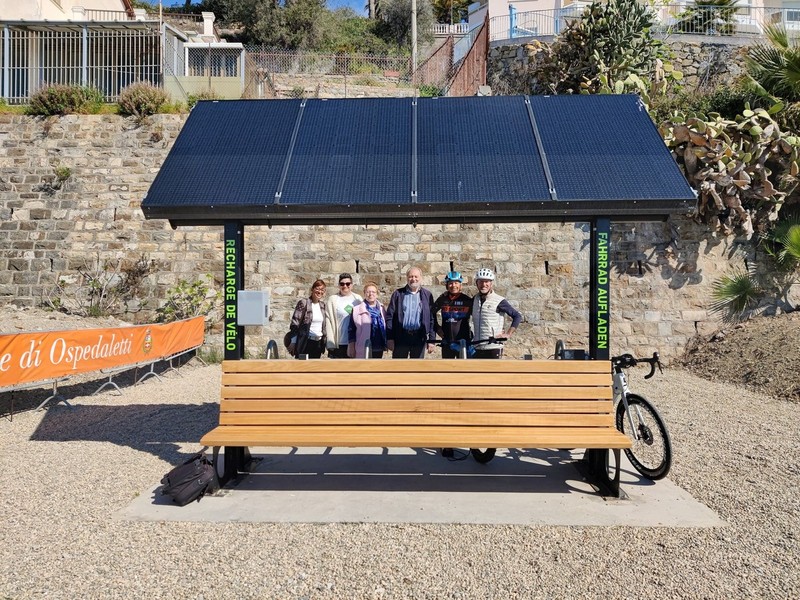Italy, with its rich cultural heritage and its natural beauty, is making giant strides in promoting sustainable mobility, thanks also to the financial support of the European Union.
Several cycle paths are under construction or in advanced planning, marking a significant evolution in the country’s soft mobility landscape. These projects not only aim to improve the quality of urban life but also to encourage eco-friendly tourism. Here is a detailed analysis of some of the most promising initiatives.
Ciclovia dell’Adriatico
Location: It extends along the Adriatic coast, from Emilia-Romagna to Molise.
Details and Progress: This cycle path is one of the most anticipated, designed to join the Adriatic coast from north to south. Currently, different sections are in different stages of construction. In particular, the stretch from Rimini to Pesaro is already usable, while other segments are awaiting funding for completion. The final project includes over 1,300 km of dedicated tracks, with rest areas, charging points for e-bikes and services for cycle tourists.
Ciclovia del Sole

SUN CYCLE ROUTE
Location: From Verona to Florence, passing through Bologna.
Details and State of Progress: Part of the wider EuroVelo network, which crosses Europe, this cycle route connects northern and central Italy through historical and landscape routes of rare beauty. The Ciclovia del Sole is currently at an advanced stage of construction, with some sections already open to the public and others nearing completion. It is estimated that the project will be fully completed within the next two years, offering a safe and well-equipped cycle route, approximately 600 km long.
Ciclovia dei Parchi
Location: Crosses the regions of Abruzzo, Lazio and Molise, connecting some of the main national parks.
Details and State of Progress: This cycle path aims to connect the most significant protected areas of the Apennines, promoting sustainable tourism and eco-compatibility. The project, still in the definition phase with regards to European funding, has already seen the creation of some sections. In national parks, for example, existing forest roads have been adapted for cycling use. The objective is to make some of the most evocative natural areas in Italy accessible in a sustainable way.
Ciclovia Ligure
Location: Along the Riviera di Ponente.
This is an ambitious sustainable mobility project located along the picturesque Ligurian Riviera. The cycle path of the Ligurian Riviera is also known as Ciclovia del Ponente and Ciclovia dei Fiori. This cycle route aims to promote ecological tourism and offer an alternative and sustainable solution to conventional means of transport for approximately 60 kilometres. One of its main features is the redevelopment of ancient disused railway tracks, transformed into cycle paths that wind along the coast, offering breathtaking views of the Ligurian Sea.
Innovation
The cycle route connects different communities and tourist attractions, thus increasing accessibility and interconnection between coastal cities. Among the points of innovation, the integration with other public transport networks and the use of eco-compatible materials for construction stand out, which respect the surrounding environment and minimize the ecological impact. It also stands out for its ecological service stations, equipped with charging points for electric bicycles and equipped rest areas, thus promoting an active and environmentally friendly lifestyle. This project not only facilitates sustainable tourism, but also serves as a model for other green mobility initiatives in Italy and Europe.
Impact and Benefits
These cycle paths are not just routes for bicycle lovers but represent a fundamental change in mobility and tourism. Investment in cycling infrastructure, supported by the EU, through regional tenders, for example that of Emilia-Romagna open from 2022, reflects a commitment to environmental sustainability. It affects public health and the local economy. The benefits range from reducing traffic and pollution in urban and touristic areas, to supporting the local economy through cycle tourism.
The new cycle paths in Italy represent a shining example of how European funds can be invested in projects that promote sustainability, well-being and innovation. As the work continues, enthusiasm is growing in the cycling community and among supporters of green mobility, eager to explore these new “green routes” that cross the scenic and cultural heart of Italy.
GaraGeeks solutions:
The products created by GaraGeeks fit perfectly into this flow which emphasizes the needs of a citizen who is increasingly attentive and well disposed to soft mobility. Installations for sustainable mobility do not need any connection to the electricity grid as they are powered 100% by solar energy.
SOLAR 2.0 is the charging station for electric bikes, scooters and other electric vehicles. It is multifunctional , therefore it allows users to take advantage of multiple functions for free: from the Wi-Fi hotspot to smartphone charging to the emergency call button .

SHELTER is the integrated photovoltaic shelter that can charge electric vehicles such as pedal-assisted bicycles (e-bikes), scooters, scooters for the elderly and wheelchairs for the disabled, for a total of 50 vehicles per day . With its maximum positioning flexibility it offers considerable economic savings for installation. Perfect for cycle paths or off-piste routes on hills or mountains, cycle commuting and cycle tourism. SHELTER is particularly suitable for solar-powered e-bike rental businesses, which can thus offer a 100% sustainable service.
The choice of materials and the entire production chain are 100% made in Italy .
Do you want to find out more about GaraGeeks and environmental sustainability products? Contact us .




